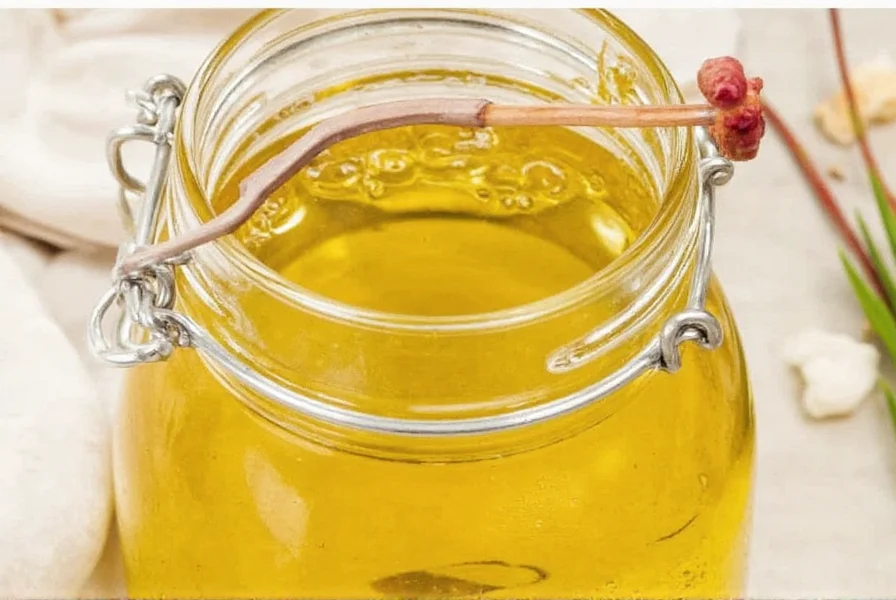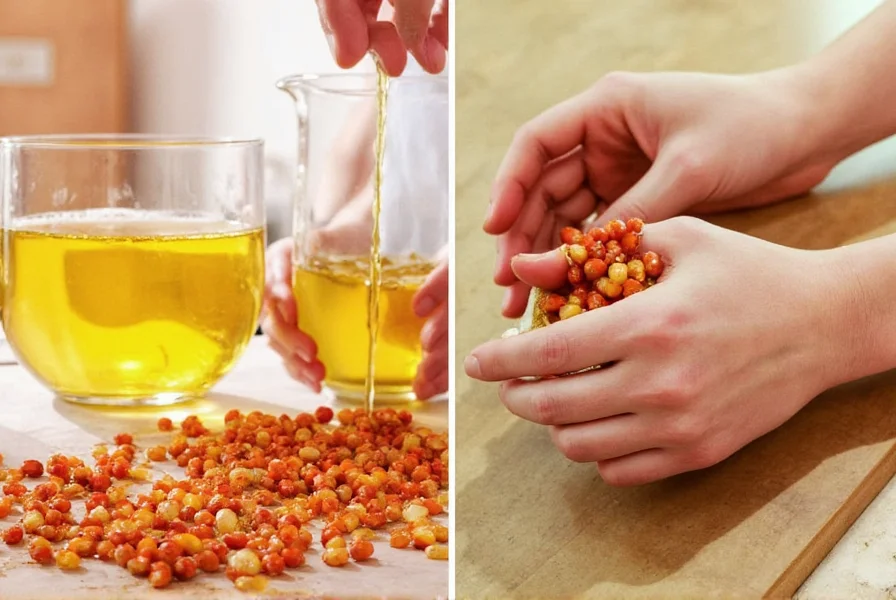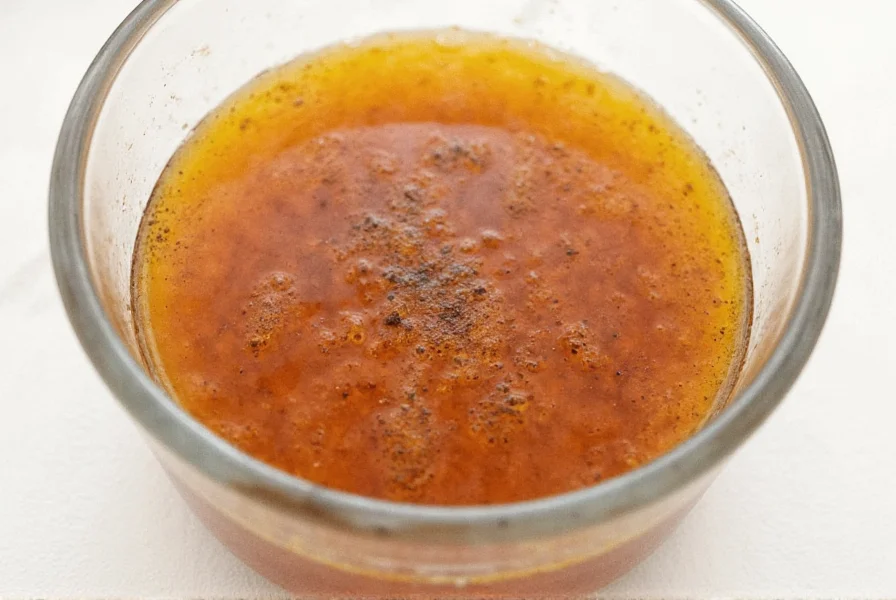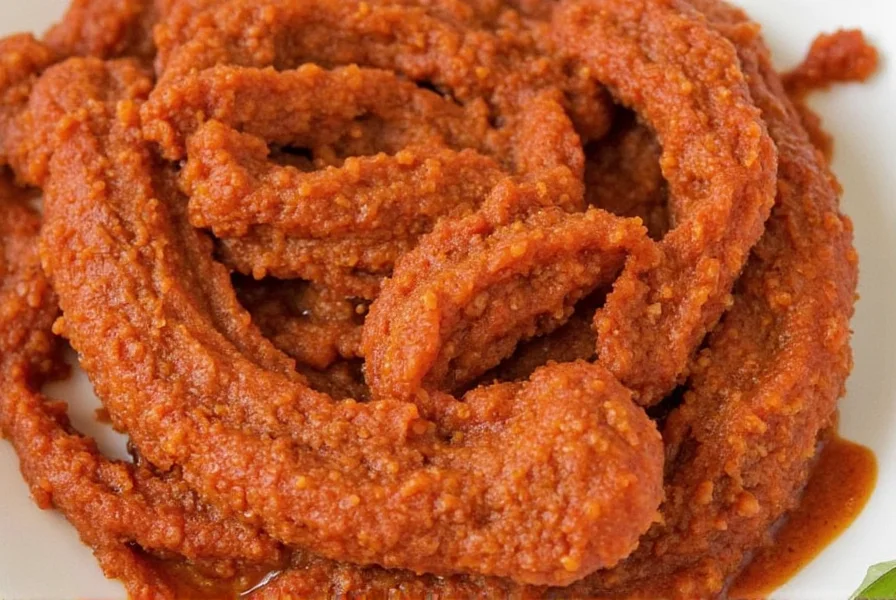Here's how to make authentic achiote oil at home: Heat 1 cup of oil with 2 tablespoons of achiote seeds over medium-low heat for 10-15 minutes until the oil turns vibrant orange-red, then strain and store in a sealed glass container. This simple process creates a versatile, colorful oil perfect for enhancing dishes with minimal effort.
Important safety note: If you add fresh garlic or other fresh ingredients, refrigerate the oil and use within 1 week to prevent botulism risk. For longer storage, use only dried ingredients or store without fresh additions.
| Characteristic | Description |
|---|---|
| Color | Vibrant orange-red hue |
| Flavor Profile | Nutty, peppery, mild |
| Primary Use | Marinades, rice dishes, soups, sauces |
| Shelf Life (homemade) | 3–6 months (without fresh ingredients) |
What Exactly Is Achiote Oil?
Achiote oil, also known as annatto oil, is made by infusing oil with achiote seeds (also called annatto seeds). These small, reddish-orange seeds come from the Bixa orellana plant native to Central and South America. While they don't have a strong taste themselves, they release a subtle nutty, peppery flavor when heated in oil — and more importantly, a stunning orange-red pigment.

Ingredients You'll Need
To make basic achiote oil, you only need a few simple ingredients:
- Achiote Seeds – About 2 tablespoons for every cup of oil
- Oil of Choice – Canola, vegetable, or olive oil (read more below for which oil to choose)
- Optional Additions – Garlic, cumin, oregano, citrus zest, bay leaves (note: fresh garlic requires refrigeration and use within 1 week to prevent botulism risk)

Step-by-Step Guide to Making Achiote Oil
- Gather Your Tools: A saucepan, fine mesh strainer, funnel, and glass bottles or jars for storage.
- Heat the Oil: In a saucepan over medium-low heat, add your oil (about 1 cup) and begin warming it slowly. Don't rush this process — low heat helps extract color and flavor without burning the seeds.
- Add the Achiote Seeds: Toss in about 2 tablespoons of achiote seeds. As they warm, you'll notice the oil starting to turn a gorgeous red-orange shade.
- Infuse Slowly: Let the mixture simmer gently for 10–15 minutes. Stir occasionally. The seeds should puff slightly and start to darken, but avoid letting them burn — it can give the oil a bitter taste.
- Strain and Cool: Once infused, remove from heat and let cool slightly. Strain through a fine mesh strainer or cheesecloth into a clean container.
- Bottle It Up: Pour the oil into sterilized glass bottles or jars. Seal tightly and store in a cool, dark place or the fridge (if using fresh ingredients).

Storage Tips for Maximum Shelf Life
Storing your homemade achiote oil properly is key to keeping it fresh and flavorful. Here are some tips:
- Use Glass Bottles: Plastic containers can absorb odors and may degrade over time. Opt for amber or cobalt-colored glass bottles to protect the oil from light exposure.
- Keep It Cool & Dark: Store in a pantry away from sunlight and heat sources. Exposure to light and air can cause oils to oxidize and go rancid faster.
- Refrigeration Extends Life: Especially if you used olive oil or added garlic, refrigerating your achiote oil can help preserve freshness for up to 6 months (without fresh ingredients) or 1 week (with fresh ingredients).
- Sterilize Containers: Before filling, make sure your bottles or jars are clean and dry. Boiling them for 10 minutes kills bacteria and keeps your oil safer longer.

Creative Ways to Use Achiote Oil in Cooking
You might think achiote oil is only for Latin American dishes — but that's far from the truth. Here are some unexpected ways to put this colorful condiment to work:
- Marinades: Brush on chicken, fish, or tofu before grilling for a smoky, golden hue.
- Rice & Grains: Stir into rice, quinoa, or couscous for a pop of color and flavor.
- Dips & Sauces: Swirl into sour cream, guacamole, or aioli for an Instagram-worthy presentation.
- Roasted Vegetables: Toss root veggies like carrots, sweet potatoes, or beets with achiote oil before roasting.
- Drizzle Finish: Like chili oil or sesame oil, drizzle a bit over finished dishes for a gourmet touch.

Buying Guide: Choosing the Best Ingredients
1. Achiote Seeds
| Brand | Features | Best For | Price Range |
|---|---|---|---|
| Frontier Co-op Organic Achiote Seeds | Organic, non-GMO, sustainably sourced | Home cooks and organic foodies | $8–$12 per lb |
| Nossa Familia Achiote Seeds | Fair trade, ethically harvested from Brazil | Eco-conscious users and chefs | $10–$15 per lb |
| Spice Mountain Achiote Seeds | Pure, no additives, affordable | Beginners and budget buyers | $5–$9 per lb |
2. Oils to Use
| Oil Type | Pros | Cons | Best Use Case |
|---|---|---|---|
| Canola Oil | Neutral flavor, high smoke point | Less nutritious than olive oil | Everyday cooking, infusions |
| Olive Oil | Healthy fats, robust flavor | Lowers shelf life, expensive | High-end dishes, finishing oil |
| Vegetable Oil | Cheap, versatile | May contain GMOs | General-purpose cooking |

Common Mistakes to Avoid When Making Achiote Oil
If your achiote oil didn't turn out perfectly, you're not alone. Here are some common pitfalls to watch out for:
- Burning the Seeds: High heat = bitter oil. Keep the flame low and stir often.
- Using Low-Quality Oil: Cheap oil means cheap flavor. Invest in a good base oil for better results.
- Not Sterilizing Containers: This leads to spoilage. Always boil or wash jars thoroughly before storing.
- Adding Fresh Garlic Without Refrigeration: This creates botulism risk. If using fresh garlic, refrigerate and use within 1 week.
- Adding Too Much Water: Moisture = mold. Never add water to your oil unless you're using a specific emulsification recipe.

Frequently Asked Questions
Got questions about making or using achiote oil? We've got answers to the most common queries from home cooks like you:
How long should I infuse achiote seeds for maximum color?
For optimal color extraction, simmer the seeds gently for 10–15 minutes. Longer than 20 minutes risks bitterness, while under 8 minutes won't yield the vibrant red hue. The oil should turn a deep orange-red during this time — if it's still pale yellow, your seeds might be old or stale.
Can I reuse achiote seeds for a second batch?
No, seeds lose most of their pigment and flavor after the first infusion. Reusing them results in weak color and bland oil. Save spent seeds for composting — they won't harm your garden and add organic matter.
Why did my achiote oil turn brown instead of red?
Browning happens when seeds burn from high heat. Always use medium-low heat and stir frequently. If your oil turned brown, discard it — the bitter compounds won't improve with straining. Next time, warm the oil gradually and remove seeds before they darken significantly.
Is achiote oil safe for people with allergies?
Yes! Achiote seeds are unrelated to common allergens like nuts, soy, or shellfish. They're generally recognized as safe (GRAS) by the FDA. However, if you have a known sensitivity to Bixa orellana (rare), discontinue use. The oil itself only carries trace proteins, making reactions extremely uncommon.
Can I substitute olive oil for canola oil in this recipe?
Absolutely — but consider your end use. Olive oil adds fruity notes ideal for Mediterranean dishes (great in aioli!), while canola's neutrality suits Latin recipes. Avoid extra-virgin olive oil for infusions; its low smoke point risks bitterness. For best results, use light/refined olive oil if substituting.
How do I know if my stored achiote oil has gone bad?
Check for three signs: 1) Rancid smell (like crayons or playdough), 2) Cloudiness or mold spots, 3) Sour/tangy taste. Properly stored oil lasts 3-6 months. If refrigerated, separation is normal — just warm gently and shake. When in doubt, discard it; spoiled oil won't improve dishes!
Final Thoughts
Making achiote oil at home is a rewarding experience that adds both flavor and flair to your meals. With just a few ingredients and a little patience, you can create a staple that elevates everything from rice to roasted vegetables.
Whether you're a seasoned chef or just getting started with global spices, achiote oil is a must-have in your culinary arsenal. So why settle for store-bought when you can make something fresher, brighter, and infinitely more satisfying?
Now go forth, infuse boldly, and enjoy the warm glow of your very own batch of achiote oil!












 浙公网安备
33010002000092号
浙公网安备
33010002000092号 浙B2-20120091-4
浙B2-20120091-4